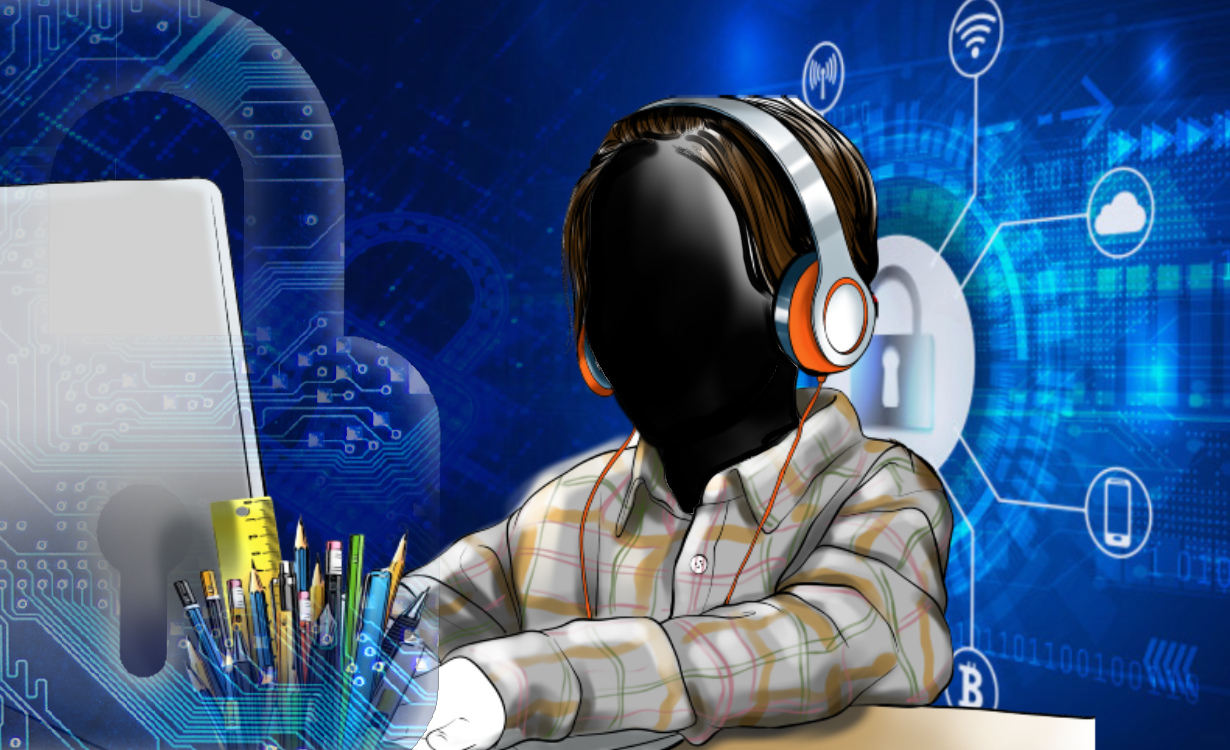The world celebrates February 8 as the Safer Internet Day globally. Initiated in 2004, this day is observed to promote the safe and positive use of the internet and digital technology, particularly for children.
As the number of children using the internet is increasing globally and also in Nepal, their exposure to online harm has also escalated, state various reports. In Nepal also, the situation is not much different.
On the occasion of the Safer Internet Day, Onlinekhabar recently talked with Anil Raghuvanshi, the founder/president, ChildSafeNet, a non-governmental organisation working for online safety for children using the internet, about possible harms and mitigation measures.
Excerpts:

How vulnerable are children using the internet to online violence or harm, in particular in Nepal’s context?
Yes, children using the internet are vulnerable to harm, even more than other people using the internet. Globally, one in three internet users is below the age of 18. With such huge numbers of children using the internet for long hours, they are at higher risk of online violence such as cyberbullying, sextortion, honey trapping, being a medium for trafficking, child marriage, sexual abuse and exploitation, identity theft, other forms of cybercrime, exposure to sexual content, revenge porn and a lot more.
As per our online risk survey 2020, one in five young girls and women (13-24 years old) and one in 10 young boys and men of the same age received hate speech and sexual messages, photos or videos on the internet.
After the Covid-19 pandemic hit the world, everything shifted to online, including the children’s study. That increased their internet exposure time. According to our survey, one in four children used the internet more than 10 hours a day during the lockdown. With the increased time spent on the internet, the exposure to online child abusers and the risk of online violence also escalates.
Plus, many children using the internet for long hours are not aware of the safe use of the internet. Even those who are aware do not seem to be following internet safety measures. The scenario is similar for parents as well.
So, did you mean the online classes are not safe for the children using the internet?
Online classrooms don’t add to the risk, but the unsafe use of the internet does the actual harm. No doubt, the trend of online classrooms contributes to the longer time children spend online, thus increasing the exposure risk.
In addition, there are a lot of abusers on the internet looking for such gullible prey to attack. There are even some organised groups who are into taking advantage of the lack of awareness of online safety among children using the internet.
Moreover, online student safety also depends on how strong the system on online classrooms is developed by the schools. We have heard cases of Zoombombing in many online classrooms. In the virtual classes, the system could be weak somewhere, and in the absence of parents’ monitoring, children may use other sites, such as having sexual content, or play games or involve in bullying during the class and in between the intervals.
On top of that, just like the pandemic, the usage of online classrooms was also unprecedented and hence there was no plan for it. As most schools had to suddenly go for the virtual classrooms, proper management of running such classes along with online safety could not happen.
How aware are the children using the internet, their parents, teachers and other stakeholders about the safer use of the internet in Nepal?

The level of awareness among children, parents and stakeholders differs from person to person. Some have no idea about online safety; some have but don’t care. Even the parents who are educated and are familiar with the internet and technology have neglected the part of safer use of the internet.
With a number of organisations working on it, I have been observing a gradual increase in the level of awareness. However, in the case of turning the knowledge of internet safety into real behaviour, it is very rare.
There are some schools that conduct classes on online safety and teach how children using the internet can do it without harming themselves. But, we see such classes happening very sporadically.
Also, children have become smarter than their parents in the case of technology, making it hard for the parents to monitor what their children do on the internet. But, sadly, they don’t know they are harming themselves.
What have the governmental and non-governmental organisations done to keep children using the internet safely?
In order to address this issue explicitly, the government has issued the Online Child Safety Directives, 2019. Nepal Telecommunications Authority had also brought Guidelines for Parents, Guardians, and Educators on Child Online Protection, in order to help lower the probable risks of the internet.
National Child’s Right Council, Ministry of Women, Children and Senior Citizens, Nepal Telecommunications Authority, the Nepal Police Cyber Bureau are working for their own sectors for ensuring the online safety of the children using the internet. Likewise, the Children’s Act 2018, the Electronic Transactions Act (2008), the Criminal Code (2017) also cover some aspects of online safety of children and young people.
Besides, non-government organisations such as ChildSafeNet, CWIN, and Voice of Children are conducting awareness programmes and training on the online safety of children using the internet. They are also advocating for digital literacy.
What are the gaps in laws, policies and response mechanisms relating to the online safety of children?
Yes, efforts are being made. However, these directives and policies are not comprehensive. Moreover, the promotion and implementation are very weak. The government has banned porn sites; there were also talks about banning online games. But, it is almost next to impossible to ensure the online safety of children by banning everything.
Also, we see a lack of seriousness about these issues among most stakeholders. Online harm to children using the internet is not taken as seriously as physical harm. Also, there is not one specific government authority that is responsible for comprehensively working on the online safety of children in Nepal.
The authorities seem unaware of each other’s works and they have a very fragmented approach towards working on this issue.

As children are introduced to many other necessary contents in school, safe use of the internet and online harm should also be taught. Parents talk about internet addiction, but they ignore these aspects. There should be a discussion about online safety and safer use of the internet among parents and children.
The office of the Nepal Police Cyber Bureau is in Kathmandu only. Moreover, there is no specific unit for children, which is very unfortunate. Besides, parents and children usually do not go to the police to register complaints on online harm. They think this will hamper their prestige and secondly, they don’t have trust in authorities.
The general public pays about 32% of tax on the internet, but I wonder how much the government spends on safeguarding online safety.
What is yet to be done to ensure the online safety of children and young people?
The key is awareness. So, we need to focus on awareness, regulation, parental guidance, education, and a support system for reporting. And, all the stakeholders from the government to the users should work on it.





















